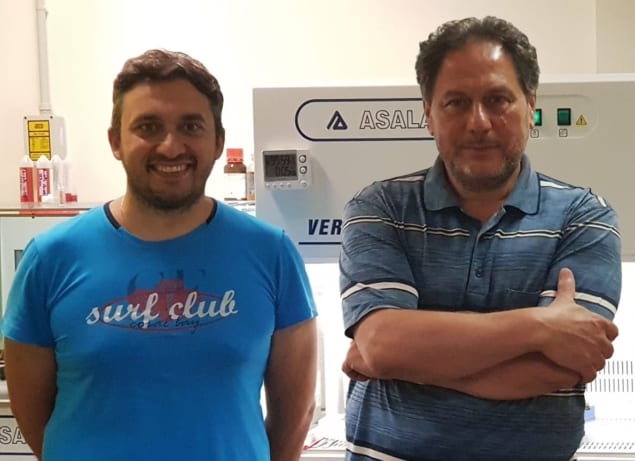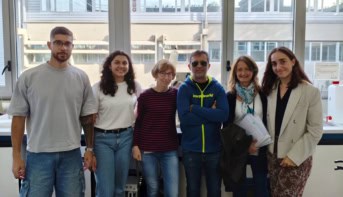
Researchers in Italy have developed a rapid test for COVID-19 based around a colour-shifting solution of gold nanoparticles. They claim that their low-cost test performs better than other rapid diagnostic tools, with a similar accuracy to the gold-standard polymerase chain reaction (PCR) tests.
Since the relaxing of lockdowns around the world that were designed to control the spread of COVID-19, cases of the viral disease have risen again. There are now fears of a winter “second wave” with more cases, hospitalizations and deaths than earlier in the year.
Effective testing is seen as crucial to controlling the outbreak. Tests that detect genetic material from the virus that causes the disease – SARS-CoV-2 – in a blood sample using PCR are considered the gold-standard due to their high sensitivity. But these tests require specialist equipment and trained personnel, leading to longer than ideal turnaround times. While some countries have successfully scaled up such tests, this has proved difficult elsewhere.
Antigen-based tests on samples from the back of the nose and throat are quicker and cheaper. These use paper strips that change colour in the presence of specific viral proteins – antigens – and can provide results in less than half-an-hour. But they have a lower sensitivity than PCR-based tests, leading to more false-negative results. This is a particular issue in later stages of infection when there can be a drop in viral load.
Now, researchers in Italy claim to have developed a test that approaches the sensitivity of PCR-based tests yet provides results in minutes. The trick to this colourimetric test is to create a solution of gold nanoparticles that collect on the virus and cause a detectable change in the colour of the liquid.
Physicist Raffaele Velotta, of University of Naples Federico II, and his colleagues achieved this by attaching antibodies targeting three surface proteins of SARS-CoV-2 to the nanoparticles. This allows the nanoparticles to recognise and coat the virus, Velotta tells Physics World.

In a study reported in ACS Sensors, the researchers analysed 94 frozen samples from nasopharyngeal swabs that had previously been tested by PCR: 45 positive and 49 negative. The colourimetric test achieved an accuracy of more than 95%, including when analysing samples with a very low viral load. In the test, the colour of the solution changed from red to purple when SARS-CoV-2 was present. This change was detected using a commercial colourimeter that could read 50 samples in less than a minute.
Velotta explains that a solution of free gold nanoparticles will have a certain colour due to the wavelengths of light that the solution absorbs. But if you add a sample containing SARS-CoV-2 to the solution, the resulting aggregation of the virus and the nanoparticles causes a shift in the absorption peak, and the colour of the solution changes. “This shift is sometime visible even to the naked eye, but this is only possible when the viral load is very high,” he says.
As the exact colour change depends on the amount of virus in the sample, this test could also allow decisions to be made about how infectious someone is and whether they need to be quarantined.
“Although the nanoparticle aggregation for biosensing in itself is not new, it seems that no other rapid test worldwide exploits such a technique, which we showed to approach the limit of detection of the molecular gold-standard analysis (real-time PCR),” says Velotta. He adds that the researchers have also been testing fresh samples. “We are noticing the sensitivity is higher and the test is much more reliable,” he explains.
Velotta hopes that the test will start being used in labs in the next couple of weeks. And the researchers have been testing the technique on saliva samples, which are much easier to take and more pleasant for the patient than nasopharyngeal swabs. The results are promising, and he hopes that such saliva tests will be possible in a month or two.



